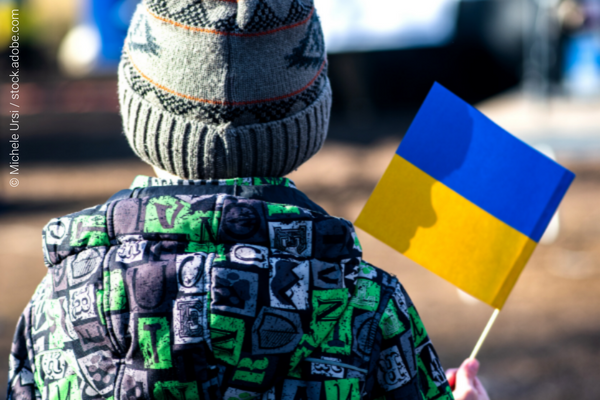Including Ukrainian refugees in secondary school classrooms: what if the pupils just don’t speak the language?

Having just spent a couple of days in Warsaw moderating the Education International Seminar titled ‘Education of Ukrainian Refugees: an initial policy dialogue amongst refugee receiving jurisdictions’, I can say that the generosity and support that local communities have shown to new arrivals is truly breathtaking. At the same time, it must be said that the social and educational inclusion of newly arriving pupils is not a given.
Inclusion in research
When new groups of students arrive in larger numbers than anticipated and teachers and school heads lack the experience, training or support needed to include them in the classroom, we see a pretty uniform response worldwide: put the pupils in a separate classroom and find a refugee or language teacher to teach them until they are ready to move into a regular class.
However, this well-intentioned response fails to take into account how our brains work. Any teacher will tell you that repetition is the key to mastery, and any language teacher will tell you that more exposure translates to greater proficiency. Indeed, evidence shows that it takes 3-6 months for pupils to acquire social language skills through several hours of exposure every day. But how much exposure to the Polish language do you think I would get if I was in a class full of Ukrainian children?
Inclusion in practice
In practice, teachers who have limited or no experience with non-native speakers in the classroom will find it challenging to include them – particularly at the end of the school year, as we see now. So how can we really go about mainstreaming children?
Many European countries have had success with limited-time welcome classes: separate classes that last from 1 day to 2 weeks – or up to 3 months for older adolescents – so refugee pupils can learn the basics before heading into mainstream classrooms.
Another option seen in both the UK and France are full immersion programmes, with or without targeted language support. This targeted support can take the form of language teachers who pull children out of class for 20 minutes or so a day, or teaching assistants who have experience teaching non-native speakers or speak the children’s home language and can provide support during lessons.
The important thing is that pupils spend a significant portion of the day surrounded by the new language during their first year at school, reaching the aims of exposure and building bonds of trust with proficient speakers.
Inclusion during exam season
It’s already May. So what about exam season? We cannot let children suffer by putting them in classes with pupils who are just not ready to take exams. The real problem, of course, is an over-reliance on standardised testing, but sadly that is not something that is going to change very soon.
In the meantime, we can incentivise Ministries of Education to grant additional academic credit to pupils who have classes with newly arrived refugees.
We can also look for appropriate times to increase language exposure outside of ‘cramming sessions’.
- Art, music, sport and some maths classes can often be an ‘easier’ space for inclusion. Piloting inclusion at ages when exam results are less crucial could be an option, too.
- We can increase refugees’ out-of-school language exposure through a whole-school breakfast or semi-structured activities during break times. We can also encourage parents to set up opportunities for pupils to socialise after school, or pair refugee families/pupils with local pupils for peer learning.
- In the summer, we can set up activities and camps that bring together local and refugee pupils, or bring families together at school for picnics and barbeques. Parents, social workers, and university students fluent in the language of instruction could also start art projects, sports teams, or music opportunities for secondary school pupils.
Including new arrivals in classrooms during exam season may not be the right way forward, especially for pupils completing their Ukrainian studies online this year. But for pupils who will spend several months in our education systems, understanding that social inclusion is a pre-requisite to both linguistic inclusion and educational success is vitally important. By doing this, we empower Ukrainian pupils to make the best of their current situation, enabling them to return home after a successful educational experience, or stay as long as necessary in their host country.
For more on this topic,
.
.
Mialy Dermish is the Executive Director of the SIRIUS Network. She previously worked with the UNHCR Regional Representation for EU Affairs in Brussels.


